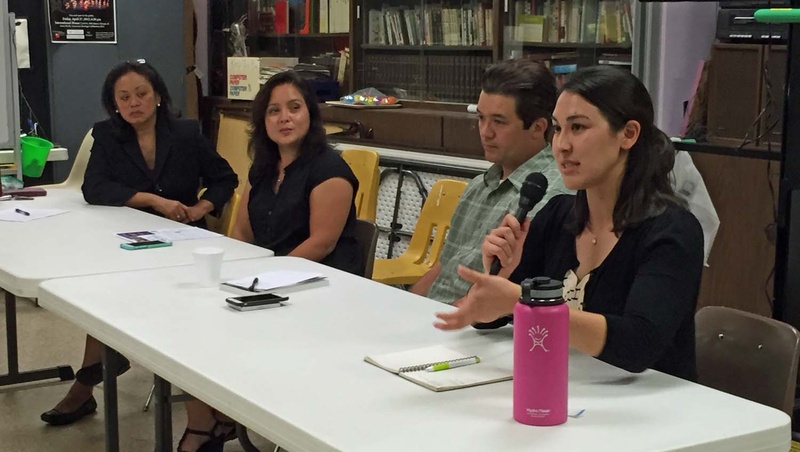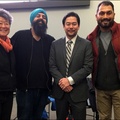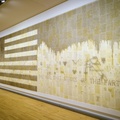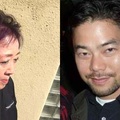“So, one of the questions that mixed people get asked a lot is ‘What are you?’” stated Laura Kina, a Professor at DePaul University, speaking at a July 19, 2016 forum on mixed-race identity in Chicago. “I don’t particularly look Japanese American. I think physically I probably read as Latina, so that is the way that I mostly go through life.”
“My ethnic background is that my mom is white but also within whiteness there are also ethnicities as well, so her background in terms of her mother’s family was Spanish Basque, and her father was from Texas, and was French, English, Irish, and Dutch. And my dad’s side of the family is Okinawan from Hawaii.”
With roughly 60 community members in attendance at the forum, Kina’s presentation was joined by talks given by community leader Jackie Denofrio, Erik Matsunaga, co-founder of Nikkei Chicago and instructor of the Ravenswood Shorin-ryu Karate Dojo, and Christine Munteanu, formerly of the JACL, but now Assistant Director of Multicultural Student Affairs at Northwestern University.
“So I definitely got asked ‘what are you?’ all the time, and of course there were times my brothers and myself have experienced overt racism,” Kina continued, in talking about growing up in the Seattle area before moving to Chicago.
“We did have cross burnings in our community, and there was one time that one of my brothers was shot at and called a ‘Jap.’ There were lots of racial slurs, and so there have been overt moments where I was reminded that I was an outsider.”
Organized by the Japanese American Service Committee’s Legacy Center with co-sponsors the Chicago Japanese American Historical Society and the Japanese American Citizens League - Chicago Chapter, this panel was the fifth in a summer-long “Memories of Now” seminar series highlighting historical and contemporary issues in Chicago’s Japanese American community.
A Community in Flux
In many ways, this seminar provided an opportunity for community members to grapple with issues not only of identity, but about the changing nature of the Japanese American community in Chicago.
According to the 2010 census, in Cook County, Illinois, the county that encompasses Chicago and many of its surrounding suburbs, there were 16,814 people who listed their ethnicity as Japanese, either alone or in combination with another race or Asian ethnicity. Of this total number, 4,725 people listed their Japanese ethnicity in combination with another race, while 643 people listed their Japanese ethnicity in combination with another Asian ethnicity.
This means that out of the entire Japanese community in Cook County, 32%, or roughly a third of the Japanese community in Chicago, classified themselves as mixed-race, with an additional 3.8% of the Japanese community who identified as mixed-ethnic Asian American.
Faced with the diversification of the Japanese American community in Chicago, the challenge for the future of Japanese American leadership will be to build a more inclusive sense of Japanese American identity, and to recruit and identify new leadership that is reflective of the growing diversity.
For Christine Munteanu, who was raised in New Jersey, and has a mother who is a first generation Japanese immigrant and a father who is a first generation Romanian immigrant, her later life was complicated by the way in which her experiences didn’t match well with the experiences of her Asian American high school friends.
“Looking back, I recognize the ways in which I would distance myself from Asian-ness, by emphasizing my mixed-ness,” stated Munteanu. “I think that in high school, I didn’t have a very strong Asian American identity. I didn’t really know that was an identity or that was a community, but I did notice myself separating myself from the Asian clique by emphasizing the fact that I was mixed.”
Complicating the issue was the way in which her family maintained a strong connection with Japan, where racial issues are often read in a manner that contrasts from how they are seen in the U.S.
“Experiencing being mixed while you are in Japan is also a very different thing, and for me it was different being mixed-white, and having that be exoticized. It was something that made me feel very special at times, but also made me feel like I would never truly be Japanese because my blood wasn’t 100% Japanese.”
It would only be in college that Munteanu would begin to find a language to help her to explain her mixed-race experiences. From there she became more involved with Japanese American community issues, and would later get involved with the JACL, which brought her to Chicago. Increasingly, she has come to realize that the important thing to recognize is the ways in which a Japanese American identity is fluid and can change over time and depending on circumstances.
“A couple of the things I recognized was fluidity, and your identity being dependent on context, and how that’s okay. Also, your identity might change throughout your life and that’s okay. Finally, there is the recognition that I have a choice in my identity.”
Challenging the Japanese American Community
For panel participants and attendees, this was an important opportunity to question internal prejudice in the Japanese American community and reclaim a sense of identity and belonging.
One of the questions from the audience members raised the important point that the Japanese American community needs to begin to address its own internalized racism and how it deals with issues of mixed-race identity, especially for community members that are Japanese and African American.
For panelists like Kina, questions like these raise the issue of where mixed-race Japanese Americans need to stand in addressing the pertinent issues of race in the U.S.
Following the election of President Obama, Kina notes how “In popular culture, a lot of times you would hear people say that we’re in a ‘post-racial moment.’ And I thought ‘Wait, I’m just beginning to have a discussion about this,’ but people were suggesting that racial issues were somehow solved. But they’re not solved.”
As Kina cautions that “I think it’s really important that we’re just not thinking about ‘Oh, we’re mixed race and let’s celebrate this sort of difference.’ Instead, in the same moment that we’re naming something to identify our experiences as human beings and our commonalities, it’s dangerous to separate ourselves off as a whole other little category.”
“We really have to think about being with other communities in anti-racist struggles. So I think that for me right now this is what it means to be mixed-race in a moment of Black Lives Matter. These are the things in social justice that we really have to be attendant to.”
Christine Munteanu expanded on these sentiments to discuss the need for openness in thinking about the future of the Japanese American community in Chicago.
“A lot of what I have tried to do in the JACL and in my work is to allow for the fluidity and re-creation of Japanese American community, in the same way that our identities can be changing and fluid as well.”
* This article has been expanded from a much shorter version that appeared in the 2016 Japanese American Service Committee 2016 Summer Newsletter, with their permission.
© 2017 Ryan Yokota






